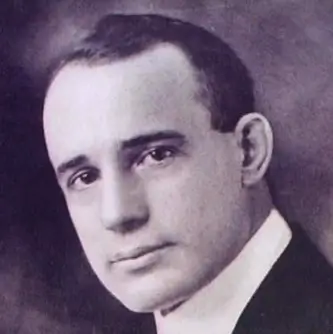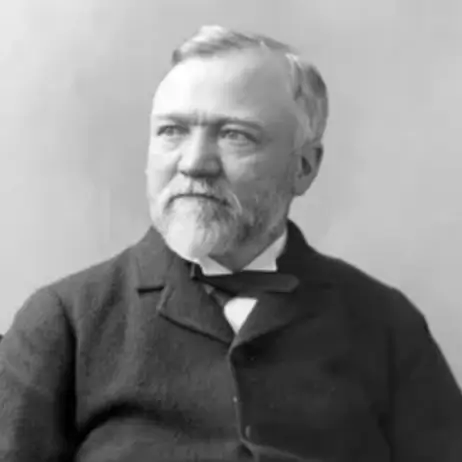Have you ever set a goal and then found yourself fizzling out weeks later?
Don’t worry, it happens to the best of us! Achieving your dreams takes more than just a wish—it requires a solid plan and the right techniques.
That’s where effective goal-setting techniques comes in. By using the right strategies, you’ll turn those hazy goals into a crystal-clear roadmap to success. Get ready to discover:
- Powerful techniques: Explore proven methods to make your goals a reality.
- Real-world examples: See how others have used these techniques to achieve great things.
- Strategies for success: Learn how to integrate these techniques into your daily routine.
Ready to transform your aspirations into achievements? Let’s dive in!
14 Effective Goal-Setting Techniques using Case Studies
Alright, it’s time to roll up your sleeves and get into the nitty-gritty of goal-setting! Forget about abstract ideas – we’re going to explore practical, proven effective goal setting techniques that will guide you towards real results.
Get ready to discover a toolbox of strategies used by successful people around the world, and learn how to make them work for you.
1. SMART Method
This classic goal-setting framework helps you turn vague ambitions into a crystal-clear plan of action. Here’s what each letter of the acronym stands for:
- Specific: Get clear and detailed about what you want to achieve. Define the who, what, when, where, and why of your goal.
- Measurable: Establish clear metrics to track your progress. How will you know you’ve reached your objective?
- Achievable: Challenge yourself, but be realistic. Consider your available resources, skills, and time constraints.
- Relevant: Make sure your goals align with your broader values, interests, and long-term aspirations.
- Time-Bound: Set a specific deadline for achieving your goal. This creates a sense of urgency and helps you stay accountable.
CASE STUDY: RACHEL’S PROJECT MANAGEMENT ADVANCEMENT
Rachel worked as a marketing coordinator but felt unfulfilled. She wanted to move into project management, where she could leverage her organizational skills and lead larger initiatives. Using the SMART method, she outlined her plan:
- Specific: Obtain an entry-level project management position within her company or a similar organization in the next 12 months.
- Measurable: Complete a project management certification course, build a portfolio by assisting on current projects, and network with 3 project managers to gain insights.
- Achievable: Rachel had excellent organizational skills and could dedicate some extra hours each week to studying and skill development.
- Relevant: This career shift aligned with her passion for leading projects and offered better advancement opportunities.
- Time-Bound: She set a 12-month timeline for achieving this major goal.
"The future belongs to those who believe in the beauty of their dreams."
 Eleanor Roosevelt
Eleanor Roosevelt After 8 months of focused effort, an internal project coordinator position opened up, and she successfully applied, showcasing her certifications and the experience she’d proactively gained.
2. Break It Down
Large-scale goals can seem insurmountable, which can easily lead to procrastination. The solution? Break down your major goal into a series of smaller, more manageable steps. This helps you:
- Overcome overwhelm: Instead of feeling paralyzed by the enormity of a task, you focus on single, achievable actions.
- Maintain motivation: Each completed step provides a sense of accomplishment, propelling you forward.
- Create a roadmap: You gain a clearer understanding of the specific actions needed to reach your end goal.
Employees with goals are 3.6 times more likely to be engaged in their work. (Source: Collato)
CASE STUDY: ALEX’S TRANSITION TO TECH
Alex felt unfulfilled in his current job and dreamed of transitioning into the tech industry. However, the prospect of a complete career change seemed daunting. He employed the “Break It Down” technique:
- The Big Goal: Become a software developer within two years.
- Milestones:
- Complete an introductory coding bootcamp.
- Build a portfolio of small personal projects.
- Network with people in the tech industry.
- Apply for entry-level developer positions.
- Actionable Steps:
- Research and choose a suitable bootcamp.
- Dedicate 2 hours each evening to learning to code.
- Attend tech meetups and industry events.
- Tailor his resume and cover letter to highlight transferrable skills.
By breaking his ambitious goal into smaller steps, Alex created a manageable plan. His persistence and focused efforts paid off as he successfully landed his first role as a junior developer.
3. WOOP
WOOP stands for Wish, Outcome, Obstacle, Plan. This unique goal setting technique helps you visualize your objectives, anticipate potential challenges, and develop proactive strategies to overcome them. Here’s how it works:
- Wish: Start by identifying a specific and meaningful goal or wish related to your career.
- Outcome: Visualize the best possible outcome if you achieve your goal. How would it feel? What positive changes would it bring to your professional life?
- Obstacle: Shift your focus to the internal obstacles that might prevent you from reaching your goal. This could be self-doubt, procrastination, or a specific skill gap.
- Plan: Create an “if-then” plan to overcome the identified obstacle. For example, “If I start to feel overwhelmed, then I will break down tasks into smaller steps and focus on one thing at a time.”
CASE STUDY: LISA’S PRESENTATION BREAKTHROUGH
Lisa had a strong fear of public speaking that hindered her career advancement. Using WOOP, she tackled this challenge:
- Wish: Deliver a successful presentation to her team and receive positive feedback.
- Outcome: She imagined herself feeling confident and articulate, clearly communicating her ideas.
- Obstacle: Her anxiety led to shaky voice and forgetting her key points.
- Plan: If she feels anxious during the presentation, she will practice deep breathing techniques and refocus on her well-prepared notes.

By anticipating her anxiety and developing a coping strategy, Lisa was able to give a presentation that impressed her colleagues and boosted her self-belief.
4. Prioritize
In the fast-paced world of work, it’s easy to get bogged down by an endless to-do list. Prioritization is essential for staying focused and ensuring your efforts are aligned with your most important goals. Here’s how to prioritize effectively:
- Master List: Write down every task or project on your plate, big and small.
- Importance vs. Urgency: Analyze each task and determine its importance (level of impact on your long-term goals) and its urgency (time sensitivity).
- Prioritization Matrix: You can use a simple matrix with four quadrants:
- Urgent and Important: Do these tasks immediately.
- Important but Not Urgent: Schedule a time to work on these tasks.
- Urgent but Not Important: Delegate these tasks if possible.
- Not Important and Not Urgent: Eliminate these tasks or put them on a very low priority list.
CASE STUDY: JAMIE’S PRODUCTIVITY BOOST
Jamie felt overwhelmed by a flood of daily requests, making it difficult to focus on his strategic projects. He implemented a prioritization matrix:
- Urgent and Important: Deadlines for client reports, attending key meetings.
- Important but Not Urgent: Developing a new marketing proposal, long-term project planning.
- Urgent but Not Important: Responding to non-critical emails, some administrative tasks.
- Not Important and Not Urgent: Mindless scrolling on social media, unimportant meetings.
By categorizing his tasks, Jamie gained clarity. He started blocking time for high-priority work and learned to say ‘no’ or delegate lower-priority distractions. This led to increased productivity and progress towards his major career goals.
5. Put It In Writing
Writing down your goals goes beyond just making a list – it’s about formalizing your commitment and making your aspirations tangible. Here’s why putting your goals in writing is powerful:
- Clarity: The act of writing forces you to clarify exactly what you want to achieve. Ambiguous goals become concrete plans.
- Accountability: Written goals serve as a constant reminder, holding you accountable for taking action.
- Visualization: Regularly reviewing your written goals allows you to vividly imagine reaching them, strengthening your motivation.
Research has shown that you are 42% more likely to achieve your goals if they are written down.
CASE STUDY: NINA’S FREELANCE SUCCESS
Nina wanted to transition to a full-time freelance writing career but felt unsure where to begin. She started by writing down her goals:
- Specific Goals: Secure 3 regular clients within 6 months, achieve a monthly income that replaced her previous salary.
- Actionable Steps: Update her portfolio, create a pricing structure, actively pitch to potential clients.
- Visual Display: Nina placed her written goals near her workspace where she could see them daily.
This simple act of writing everything down gave Nina a clear roadmap and a sense of purpose. Her written goals served as a constant source of inspiration, propelling her towards her desired outcome.
6. OKR Goals
The OKR framework is widely used by successful companies and individuals to set and achieve audacious goals. Here’s how it works:
- Objectives: These are big, aspirational statements that define what you want to achieve. They should be inspiring and somewhat challenging.
- Key Results: These are measurable outcomes that indicate whether you’re on track to reaching your Objective. Typically, you set 2-5 Key Results for each Objective.
"A goal is a dream with a deadline."
 Napoleon Hill
Napoleon Hill CASE STUDY: EMILY’S MARKETING IMPACT
Emily led her company’s marketing team. She used OKRs to set a bolder direction:
- Objective: Double brand awareness within the next year.
- Key Results:
- Increase website traffic by 50%
- Achieve 20% growth in social media followers
- Secure media coverage in 3 major industry publications
By using OKRs, Emily created a clear focus for her team and set measurable targets to track their progress. This ambitious approach led to significant growth and recognition in their industry.
7. HARD Goals
HARD goals stand for Heartfelt, Animated, Required, and Difficult. This framework emphasizes setting goals that truly excite you and push you beyond your comfort zone. Here’s what each letter means:
- Heartfelt: Goals that deeply resonate with your values and passions.
- Animated: Goals that create a vivid image of success in your mind.
- Required: Goals that are essential for fulfilling your purpose or mission.
- Difficult: Goals that stretch your abilities and require growth.

CASE STUDY: JENNA’S CREATIVE DREAM
Jenna had a passion for painting but kept it as a hobby due to fear of failure. She decided to embrace HARD goals:
- Heartfelt: She longed to express herself creatively and share her art with the world.
- Animated: She imagined exhibiting her paintings in a gallery and receiving positive feedback.
- Required: This felt essential to living an authentic and fulfilling life.
- Difficult: Overcoming insecurities and putting her work out there was incredibly challenging.
Jenna dedicated herself to developing her skills, building a portfolio, and actively promoting her art. Her commitment and courage led to securing gallery representation and making a living doing what she loved.
8. Visualize Success
Our brains have a remarkable ability to influence our reality. Visualization is a mental rehearsal where you vividly imagine yourself achieving your goals, engaging all your senses. Here’s how it helps your career pursuits:
- Increased Motivation: Visualization makes your goals feel real and attainable, boosting your drive and determination.
- Clarity and Focus: By visualizing the desired outcome, it helps you make decisions and take actions that align with your vision.
- Overcoming Obstacles: Imagining yourself successfully navigating challenges strengthens your belief that you can handle setbacks.
CASE STUDY: RYAN’S NEGOTIATION CONFIDENCE
Ryan was nervous about asking for a raise, fearing rejection. He started practicing visualization:
- The Scene: Imagined himself sitting across from his manager, feeling calm and confident.
- The Conversation: Visualized himself clearly articulating his accomplishments and desired salary range.
- The Outcome: Imagined his manager agreeing to his request, experiencing a sense of pride and accomplishment.
Ryan’s visualization practice reduced his anxiety and increased his self-assuredness. When the actual negotiation took place, he performed far better than he expected and successfully achieved his desired raise.
9. Get Accountable
Staying consistent and motivated can be challenging, especially when pursuing long-term goals. Finding an accountability partner or system dramatically increases your chances of success. Here’s how:
- Social Support: Share your goals with a supportive friend, colleague, or mentor. Regularly update them on your progress. Knowing someone is checking in on you provides a sense of external motivation.
- Accountability Groups: Join a mastermind group or hire a coach. These structured settings provide regular check-ins, encouragement, and a sense of responsibility within a community.
- Accountability Apps: Utilize apps designed to track your goals, set reminders, and connect you with other goal-oriented individuals.
CASE STUDY: MAYA’S WRITING ACCOUNTABILITY
Maya aspired to finish her first novel but struggled with procrastination. She joined an online writing group:
- Weekly Goals: Group members shared their weekly writing targets.
- Check-Ins: They provided updates, received constructive feedback, and celebrated each other’s progress.
- Motivation Boost: The sense of community and shared purpose kept Maya motivated and on track.
Having consistent accountability from her writing group played a crucial role in Maya finally completing her novel.
"If you want to be happy, set a goal that commands your thoughts, liberates your energy, and inspires your hopes."
 Andrew Carnegie
Andrew Carnegie 10. Track Your Progress
Regularly assessing your progress is crucial for staying motivated, making adjustments, and celebrating your successes. Here’s how to track your progress effectively:
- Choose Your Method: Determine how you’ll track your goals. This could be a simple spreadsheet, a goal-tracking app, a journal, or even a visual chart on your wall.
- Measurable Metrics: Use the metrics you established when defining your SMART goals. This could be numbers (sales figures, income earned), milestones achieved, or specific actions completed.
- Regular Reviews: Set a consistent schedule for reviewing your progress (daily, weekly, or monthly).
CASE STUDY: ETHAN’S FITNESS PROGRESS
Ethan wanted to improve his overall fitness and lose weight. He meticulously tracked his progress:
- Metrics: Weight, body measurements, workout logs (distance, reps, weights lifted).
- Tool: He used a fitness app that generated visual graphs of his progress over time.
- Review: Weekly weigh-ins and reviewing his tracked workouts
Seeing the line on the graphs steadily trend downwards kept Ethan motivated. When he hit plateaus, the data helped him identify where he needed to adjust his exercise or diet.
11. Reward Yourself
Celebrating your successes, both big and small, is essential for maintaining motivation and building positive associations with goal achievement. Here’s why rewards are important:
- Reinforcement: Rewards help solidify the connection between your actions and positive outcomes, making you more likely to keep going.
- Anticipation: Having something to look forward to creates a sense of excitement and momentum.
- Fun Factor: Goal-setting shouldn’t be all about work! Rewards add an element of enjoyment to the process.
CASE STUDY: SARAH’S REWARD SYSTEM
Sarah was working towards a demanding professional certification. She created a reward system:
- Small Rewards: For each study session completed, she enjoyed her favorite tea and a relaxing bath.
- Milestone Rewards: Upon passing each exam section, she treated herself to a nice dinner.
- Final Reward: After achieving the certification, she planned a weekend trip to celebrate her accomplishment.
Sarah’s rewards provided regular moments of pleasure and were key to helping her stay on track during her challenging journey.
12. Adjust as Needed
Life is unpredictable and circumstances can change. Being adaptable will increase your chances of success in the long run. Here’s how to embrace flexibility:
- Reassess Regularly: Schedule regular times to check in on your goals. Are they still realistic? Do they still align with your priorities?
- Be Open to Change: Don’t cling to the original plan if it’s no longer serving you. Modify your goals, your timeline, or your approach.
- Failure as Feedback: Don’t view setbacks as defeats, but as opportunities to learn and re-strategize.
CASE STUDY: BEN’S SHIFTING PATH
Ben set out to launch his own consulting business. After several months, he realized the market was more saturated than he anticipated. Instead of giving up, he adjusted:
- Pivoting his Focus: He niched down his services, targeting a specific industry where his expertise was in high demand.
- Re-evaluating Timeline: He accepted that establishing his business would take longer than initially planned.
- Seeking Mentorship: He found a mentor with experience in his niche to gain guidance and support.

Ben’s adaptability allowed him to turn a potential failure into a modified success story. He eventually built a thriving consulting business that aligned with his strengths and the evolving market.
13. Focus on Habits
Achieving long-term goals often comes down to consistent daily actions. Focusing on building strong habits is a powerful way to create lasting change. Here’s why:
- Sustainable Progress: Small, consistent habits practiced over time yield significant results.
- Reduced Effort: Once habits become automatic, they require less willpower and mental energy.
- Compounding Effect: The positive impact of your habits build upon each other, leading to exponential progress.
CASE STUDY: MARK’S EXERCISE TRANSFORMATION
Mark wanted to improve his fitness but found it hard to stick with a gym routine. He shifted his focus to habits:
- Small Habit: He started with 10 minutes of daily exercise, even just a brisk walk.
- Consistency is Key: His focus was on doing something every single day, regardless of intensity.
- Gradually Increasing: As the habit became ingrained, he naturally increased the duration and intensity of his workouts.
Mark’s habit-centered approach led to a significant and, most importantly, sustainable fitness transformation.
14. Public Declaration
Sharing your goals with others increases accountability and can unlock unexpected support. Here’s how to use it strategically:
- Selective Sharing: Choose supportive and encouraging individuals to share your goals with: friends, mentors, colleagues.
- Specific Announcement: Be clear about what you aim to achieve and your desired timeline.
- Progress Updates: Regularly update those in your support network, sharing your successes and challenges.
WARNING: Apply this technique with people who have or are chasing the results that you want. Otherwise, they might react with negative thoughts or indifference.
CASE STUDY: SARAH’S ENTREPRENEURIAL LEAP
Sarah dreamed of starting her own business but feared taking the risk. She decided to publicly declare her goal:
- Social Media Post: She shared her vision on her social media platforms, outlining her plans. In a community with other entrepreneurs.
- Networking Events: She talked about her venture at events and sought advice from experienced entrepreneurs.
- Accountability Partner: She found a mentor who held her accountable and provided practical guidance.
"The only thing that stands between you and your dream is the will to try and the belief that it is actually possible."
 Joel Brown
Joel Brown Sarah’s public declaration led to unexpected connections, resources, and a strengthened determination to succeed.
Tips to Implement These Techniques in Your Routine
You now have a toolkit of powerful goal-setting techniques. But how do you turn them into real-life results?
Let’s look at some practical tips to help you integrate these strategies into your daily life and make your goals a reality.
Start Small
Trying to implement every single goal-setting technique at once is a recipe for burnout. Instead, choose one or two that resonate with you the most.
Focus on mastering those before layering in additional strategies. Remember, small, consistent steps lead to significant progress over time.
Example: If you’re new to goal setting, starting with the SMART method and the habit of writing down your goals daily is a great place to begin.
Schedule It In
Goal-setting shouldn’t be an afterthought squeezed in when you have a spare moment. To see real results, treat it like a non-negotiable priority. Schedule dedicated time in your calendar for activities like:
- Goal Definition: Set aside time to clearly define your goals at the beginning.
- Planning: Regularly block out time to plan your action steps and break down larger goals.
- Progress Tracking: Schedule weekly or monthly check-ins to track your progress.
- Reflection and Adjustment: Dedicate time to analyze what’s working, what isn’t, and re-strategize as needed.
Example: Block off 30 minutes every Sunday morning to review your goals, update your progress tracker, and plan your key actions for the week ahead.
Create a Supportive Environment
Staying motivated and consistent is much easier with support! Consider these options for accountability:
- Accountability Partner: Team up with a friend, colleague, or family member who shares similar goals or simply wants to support your journey. Schedule regular check-ins to update each other on your progress.
- Accountability Groups: Join an online community or in-person group focused on goal-setting and achievement.
- Coaching: Hire a coach or mentor who can provide guidance, structured support, and help you stay on track.

Example: Find an accountability buddy and set a weekly phone call or coffee date to discuss your goals, challenges, and successes.
Embrace Imperfect Action
Perfectionism is often the enemy of progress. Don’t get trapped waiting for the “perfect plan” or the “perfect time” to start. Action, even if it’s messy or imperfect, is far more valuable than endless planning without execution.
- Focus on Progress, Not Perfection: The goal is to move forward, not create a flawless plan from the get-go.
- Small Steps Matter: Taking even a small step towards your goal creates momentum and builds confidence.
- Learn and Adjust: View imperfect action as a way to gather feedback and improve your approach over time.
Example: Instead of agonizing over the perfect website design for your business idea, start with a simple landing page and gather feedback from potential customers.
Visualize Your Success Regularly
Our brains are wired to respond to visual cues. Make your goals tangible and keep them top of mind with these strategies:
- Vision Board: Create a collage of images, words, and quotes that represent your goals and aspirations. Place it where you’ll see it daily.
- Written Reminders: Write your goals on sticky notes or index cards and post them in prominent places like your mirror, workspace, or refrigerator.
- Goal Visualization: Spend a few minutes each day vividly imagining yourself achieving your goals. Engage all your senses in this mental rehearsal.
Example: Create a vision board on Pinterest, collecting images that symbolize your ideal career, dream home, or desired lifestyle.
Conclusion
Goal setting isn’t just wishful thinking – it’s a powerful tool that can transform your life. By understanding the importance of goals and using the techniques we’ve explored, you’ll gain clarity, motivation, and a clear roadmap to achieving your dreams.
Remember, the journey may have its challenges, but with persistence, flexibility, and the right strategies, nothing is out of your reach.
Next Steps
- Choose Your Goals: What are the most important areas of your life where you want to see change or growth? Get specific!
- Select Your Techniques: Which of the techniques we discussed resonate most with you? Start by implementing one or two.
- Take Action: Knowledge without action is useless. Today, make one step, however small, towards achieving one of your goals.
I believe in you! Now go forth, set those goals, and create the life you truly desire.
Frequently Asked Questions
I’m overwhelmed by the idea of goal setting. Where do I even start?
The best way to overcome overwhelm is to take one small step at a time. Start by choosing just one area of your life where you’d like to see improvement.
Then, try freewriting about your desires for that area – don’t worry about perfect goals just yet. This will get your ideas flowing.
After that, you can start applying some of these 14 goal setting methods that will help you achieve your objectives!
How can I find the time to work towards my goals?
Fitting goal-oriented activities into a busy life takes planning. Analyze your current schedule and identify pockets of time that might be underutilized.
Consider waking up a bit earlier, using your lunch break more strategically, or delegating tasks that drain your time and energy.
What if I fail to reach my goals?
It’s important to reframe failure as feedback. When setbacks occur (and they will!), take time to reflect on what you’ve learned.
- Did you set a too-ambitious goal?
- Were there external factors you couldn’t anticipate?
Use this information to adjust your goals or strategies and keep moving forward.
How do I stay motivated when progress seems slow?
Focus on celebrating small wins along the journey. Set up a system to track your progress, even minor progress, towards your larger goal.
Visualize the final outcome regularly and consider implementing a reward system for yourself.
What are the 6 main steps to setting effective goals?
Here’s a simple 6-step process:
- Identify what you want
- Write it down using the SMART framework
- Break your goal into smaller steps
- Set deadlines
- Take action
- Track your progress and adjust your plan




